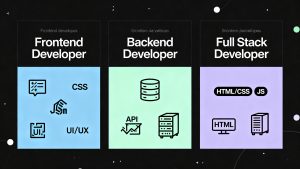Telecom providers have long depended on highly customized, tightly integrated legacy systems to manage essential operations such as billing, provisioning, and customer management. While these platforms have delivered reliability, they now hinder innovation, agility, and scalability. As the industry shifts toward cloud-native, data-driven models, modernizing these entrenched environments has become a critical business imperative.
The Power of AI and DevOps in Telecom Transformation
A new era of telecom modernization is being driven by the convergence of generative AI, DevOps methodologies, and modular system design. These technologies empower organizations to upgrade legacy systems with greater speed, intelligence, and resilience—without risking operational stability.
Streamlining Legacy Transformation With GenAI and DevOps
Generative AI is proving invaluable for large-scale transformation projects. It can:
- Analyze legacy codebases and generate documentation for poorly documented systems
- Propose refactored modules suitable for modern architectures
- Accelerate code migration and reduce manual workloads
When integrated with DevOps pipelines, AI helps teams sustain momentum throughout the modernization process. For example, during a major cable provider’s migration from Ruby on Rails to Java Springboot, GenAI analyzed legacy code, created comprehensive migration documentation, and supported phased deployment. Tools like Windserf (Codeium) converted Ruby code to Java, then upgraded it to Springboot, streamlining onboarding, reducing reliance on individual expertise, and increasing team velocity by up to 30%. DevOps pipelines further improved code quality and security.
DevOps practices, particularly CI/CD, enable teams to:
- Test individual components in isolation
- Deploy updates with minimal risk
- Ensure service continuity even during complex migrations
This is especially vital in telecom, where minor disruptions can impact thousands of customers.
Tackling Complex Billing System Modernization
Legacy billing systems are among the most challenging to modernize due to decades of custom logic for rating, charging, and revenue recognition. These systems are often deeply entwined with customer care and provisioning tools, making decoupling difficult.
Rationalizing and Migrating Billing Platforms
To prepare for commercial-off-the-shelf (COTS) solutions, organizations must:
- Normalize and document existing business logic
- Use AI to identify redundancies, surface undocumented dependencies, and generate test cases
- Extract, standardize, and validate business rules for integration with CRM, provisioning, and financial systems
AI-driven tools support simulation, validation, and regression testing, ensuring billing accuracy and regulatory compliance. During a major media billing modernization, legacy logic was normalized, microservices were introduced, and DevOps pipelines established for continuous integration and deployment. AI tools like GitHub Copilot and Windserf accelerated code generation and quality assurance, laying the foundation for future COTS integration.
Migrating to convergent billing systems can dramatically improve maintainability and scalability, provided there is rigorous upfront rationalization, clear process mapping, and robust fallback strategies during cutover.
Minimizing Disruption While Fostering Innovation
A key challenge in telecom modernization is balancing the need for innovation with the imperative to minimize business disruption. Rather than dismantling legacy systems all at once, successful organizations introduce new capabilities gradually.
Progressive Modernization Strategies
- Start with loosely coupled modules such as reporting, analytics, or self-service portals to validate new technologies before integrating core transactional systems
- Employ digital twins or shadow deployments to simulate new architectures alongside legacy systems without affecting live operations
- Use phased strategies to decouple non-critical components and redesign them as microservices, allowing parallel operation and real-world scenario testing
Regular engagement with business users through workshops and training ensures alignment and smooth adoption. By the time core systems are transitioned, teams are familiar with new workflows, reducing resistance and building confidence in the modernization roadmap.
Zero-downtime deployment strategies and robust rollback mechanisms within DevOps workflows further reduce risk, ensuring stability and compliance even during rapid change.
Building for the Future: Big Data, APIs, and Convergent Billing
To remain competitive, telecom providers must move away from monolithic architectures and embrace modular, interoperable platforms.
Key Enablers of Future-Ready Telecom Systems
- Big Data: Advanced data ingestion, storage, and processing frameworks provide real-time insights into network performance, customer behavior, and fraud detection. AI models leverage this data to optimize pricing, infrastructure planning, and service delivery.
- API-First Architecture: APIs enable seamless integration across platforms, making it easier to launch new services, partner with third parties, and adapt to changing market demands.
- Convergent Billing Systems: These platforms unify prepaid, postpaid, and multi-service offerings, simplifying bundled product launches, usage tracking, and billing reconciliation.
Modernization is now a continuous journey, not a one-time event. Generative AI accelerates development, DevOps ensures safe and repeatable deployments, and modular architecture provides the agility needed to adapt to future demands. Tasks such as analyzing billing rules or validating migrations now take days, not months. With embedded AI agents, telecom platforms are evolving toward self-optimization and adaptive capabilities.
The Path Forward: Embracing Continuous Evolution
Organizations that approach modernization with a pragmatic, technology-driven mindset can:
- Reduce operational overhead
- Launch new products faster
- Future-proof infrastructure for the next wave of digital transformation
While the journey comes with risks, the cost of inaction is far greater. By leveraging AI, DevOps, and modular design, telecom providers can break free from legacy constraints and build resilient, innovative networks for the future.
Read more such articles from our Newsletter here.



